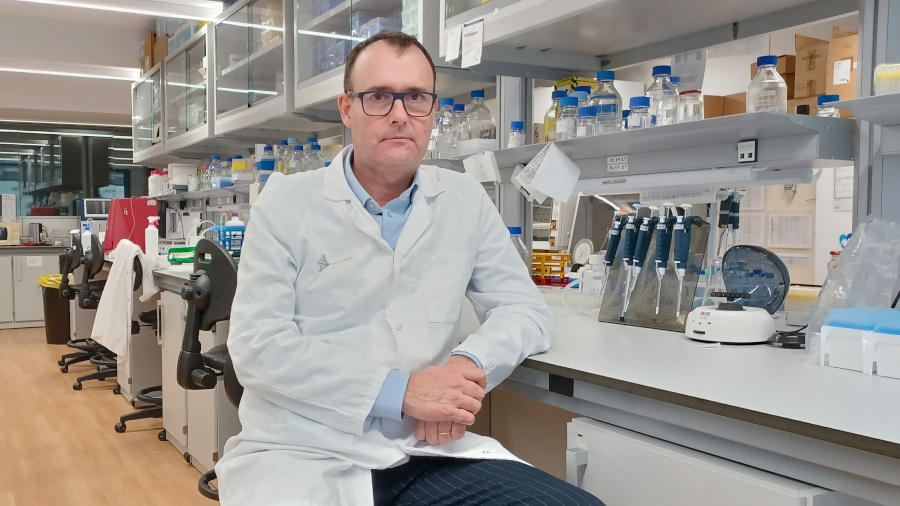Mechanism explaining the appearance of head and neck tumours identified
A study on a rare disease published by the prestigious journal Nature describes that the lack of repair of genetically damaged cells caused by endogenous aldehydes or those present in tobacco and alcohol are behind the elevated risk of developing head and neck tumours in the general population.

An international study including the involvement of researchers from the Hospital de la Santa Creu i Sant Pau – IIB Sant Pau Research Institute and the Universitat Autònoma de Barcelona (UAB) has identified the mechanism by which patients with Fanconi anemia develop head and neck tumours, and were also able to verify that this same mechanism explains why drinking and smoking increase the risk of having this type of cancer in the general population.
The results, published in the prestigious journal Nature, show that the deficiency in the natural cell repair process produced by chemical substances that damage the DNA, called aldehydes, is responsible for the risk of developing head and neck squamous cell carcinoma.
Dr Jordi Surrallés, Head of the Genomic Instability Syndromes and Cancer Predisposition Group and Director of the Hospital Santa Creu i Sant Pau – IIB Sant Pau Research Institute and the Sant Pau-UAB Joint Research Unit in Genomic Medicine, as well as researcher at the Biomedical Research Centre Network for Rare Diseases (CIBERER), is the only researcher from Spain to participate in the study. He affirms that “these results help us understand the mechanisms involved in the origin of these types of tumours and allow us to find new strategies aimed at counteracting this risk not only in Fanconi anemia patients, but also among the general public, in which the combination of tobacco and alcohol also elevate the risk of developing these types of tumours”.
Aldehydes and DNA repair
Human cells are exposed to different environmental aggressions that can damage their DNA and constant repair is necessary. At any given moment a cell might be undergoing the molecular process of sealing fissures found on the double helix or correcting its genetic code in order to maintain a well-functioning organism.
People born with Fanconi anemia — a rare disease characterised by genomic instability and a deficiency in the DNA repair mechanism, resulting in chromosome fragility — have a lack of function in one of these repair systems, which make their cells unable to eliminate the damage caused by different environmental factors.
These people may suffer from numerous medical problems throughout their lifetime, including things like bone marrow failure, congenital malformations and also a very high risk of developing head and neck tumours. “This type of cancer is normally diagnosed in patients aged 60-70; in people with Fanconi anemia it may be diagnosed when they are 20 to 30 years old and wiht an index that may be 700 times higher than among the general population”, says Dr Surrallés.
In this study, led by Dr Agata Smogorzewska of the Rockefeller University in New York, researchers analysed the gene signatures of tumours of some 50 Fanconi anemia patients and compared them to data of hundreds of sporadic tumours. They were thus able to verify that the mutational signature was very similar in both types of tumours. Specifically, they identified that damaged cells could not repair themselves due tot he aldehydes in their DNA, leading ot the accumulation of mutations which would finally cause the development of cancer.
A link to tobacco and alcohol
One of the most important aspects of the results of this study is that smoking and drinking, which subject the body to aldehydes, favour the appearance of tumours due to mechanisms similar to those involved in Fanconi anemia. “When the organism is exposed to an amount of damage greater than what cell can repair, a process similar to the one occurring in Fanconi anemia patients appears, and that is when these tumours develop”, Dr Surrallés points out.
Dr Smogorzewska adds that these discoveries could also explain why head and neck tumours in Fanconi anemia patients are particularly deadly, with a survival rate of only 17 months on average after being diagnosed. "You have full genome damage, which simultaneously affects many different systems normally in charge of preventing our cells from developing cancer, and we believe that this is one of the reasons for the aggressiveness of these tumours".
With these results, new objectives have been set such as finding drugs that can influence the repair mechanism that works on the damage caused by aldehydes, or manipulate the process to prevent this harmful substance from accumulating in the body and thereby delay or avoid the development of these tumours in both Fanconi anemia patients and the general population. Dr Surrallés explains that “we are already working in that direction and are participating in two clinical trials”.
Original article
Webster, A.L.H., Sanders, M.A., Patel, K. et al. Genomic signature of Fanconi anaemia DNA repair pathway deficiency in cancer. Nature (2022). https://doi.org/10.1038/s41586-022-05253-4